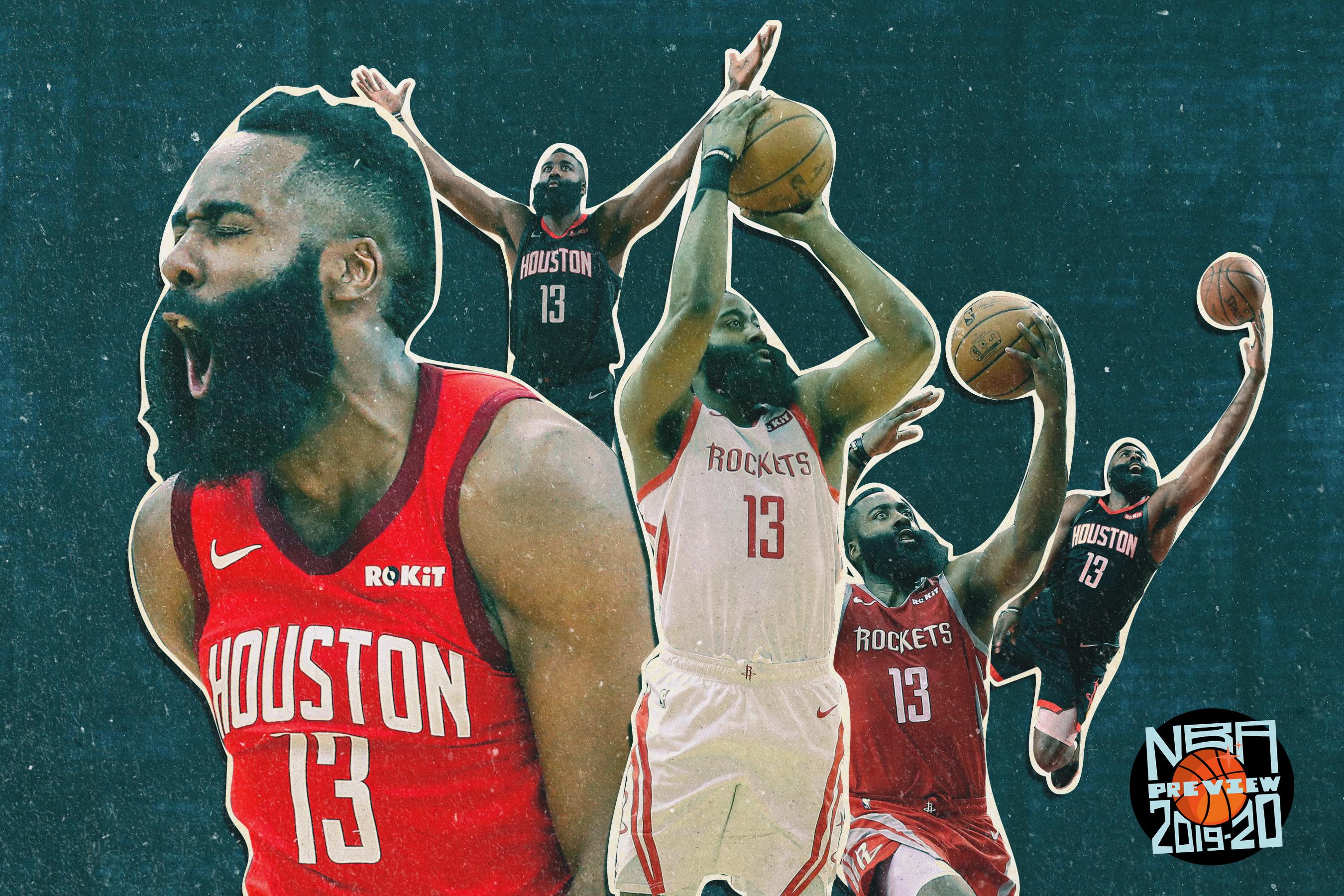
One word comes to mind when attempting to encapsulate James Harden’s evolution from his chrysalis-building in Oklahoma City to becoming a one-man offense in Houston: extralegal. Harden has become one of the most influential offensive players of his generation by ostensibly disregarding the NBA’s rule book. Yet calling Harden a habitual line-stepper might miss the central thrust of his oeuvre entirely. Plenty of players have harnessed the vagueness of the NBA’s traveling rules over the generations, but Harden’s career was literally born into it, molded by it.
Harden entered the league in 2009, when the NBA became the first basketball league in the world, at any level, to explicitly establish language allowing a player to take two steps before stopping, passing, or shooting the ball; in doing so, it codified the idea of gathering (as well as the “zero step,” which, in ref speak, refers to the pivot foot established during the gather), a move that had been tacitly allowed since the 1960s. It was, conveniently, also around the time when the so-called Euro-step—an evasive offensive maneuver wherein the ball handler takes one step in one direction, then a lateral step in the opposite direction—had been reimaged from a clear violation to a must-have in any player’s repertoire. The efficacy of Harden’s Euro-step was apparent from the very beginning of his career, but that was only Phase 1.
With every new season came a new way of exploiting the gray area—from the “stick-and-move” to the stepback, to whatever is on the horizon, Harden has further edged the line of acceptability. Whether his play earns your respect or your gastrointestinal distress, he turns both fans and critics into NBA linguists, futzing over the grammar of the league’s guidelines in order to celebrate his outside-the-box genius or expose his blatant cheating.
Ten seasons after Harden’s rookie campaign and the NBA’s first attempt at explaining the ill-defined gather step, the league has decided to further clarify its traveling rules—almost certainly a response to Harden’s historic 2018-19 season. The rule book now specifically defines what constitutes a gather: The point at which a player puts two hands on the ball, or otherwise permits the ball to come to rest, while they are in control of it. Traveling violations are expected to be a point of emphasis this season as the officiating staff aims to educate teams, players, and fans about what is and isn’t a travel.
Which explains why there is something vaguely threatening about Harden’s game, the particular way it sits within a whisper of wrong—as if submitting to his vision of the league might allow entire systems to crumble. It’s like he is preying on misinformation that has been pervasive for decades.
Harden’s on-court signifiers (i.e. a creative playmaker who operates on his own sense of time) seem to bleed into the rest of his personage. After trading for him in 2012, the Rockets gave him free rein as a playmaker. In 2015, Adidas did the same, making him a centerpiece in ad campaigns centered on the power that lies in being a creator. If the Lil Penny character in the ’90s was meant to amplify Penny Hardaway’s personality by way of contrast, Harden’s brand management is all about consolidation. There is a sort of multi-hyphenated relationship between Harden and his brand: ball-is-life-is-art. Whether it works is in the eye of the beholder, but the only reason it might is because he seems to have completely bought into that particular idea of himself.
It wasn’t always clear what that idea could become. In the 2012-13 season, Harden’s first as both a Houston Rocket and a leading man, then–Rockets coach Kevin McHale tried to describe his new franchise player in terms that might as well have been used to profile Chuck Hayes:
“James is a little bit more of an old-school type perimeter guy, a big strong guy who would’ve been able to play when there was hand-checking and all the holding and grabbing,” McHale said. “He’s just strong, just old-school strong—a big 6-4, 6-5, 220-pound guy who can throw his body around.”
In fairness, he wasn’t exactly wrong: The player McHale saw then—a thick, balletic athlete capable of both absorbing and evading contact—might have resembled Elgin Baylor, who was similarly listed at 6-foot-5 and 225 pounds. Baylor was also a forgotten pioneer in weaponizing the gather step, Euro-stepping over competition in the 1960s, nearly two full decades before Manu Ginobili was even born. But it’s hard to imagine anyone back then envisioning what Harden has been able to accomplish with the technique, now existent for more than half a century.
Harden’s remarkable career thus far exists without a clear precedent, but even his outlaw approach exists within the confines of history. And for him to leave a lasting mark, he’ll have to play the same game as every other star across generations.
Earlier in September, ESPN published a staff survey ranking the top NBA players of the decade. LeBron James came in at no. 1, Steph Curry at no. 2, and Kevin Durant at no. 3, with Harden sharing the no. 4 spot with Kawhi Leonard. The top three is a no-brainer, perhaps because the respective legacies of the three players have been more or less cemented. LeBron has GOAT bona fides; Curry is the greatest shooter in history and one of the league’s biggest era-shifting catalysts; Durant might be the most complete player ever, and he’s framed what’s possible for the modern big man. They’ve also all won championships.
Harden’s influence is more difficult to parse in the present, a sentiment that doesn’t appear to be lost on him. Howard Beck’s recent Bleacher Report profile focused on Harden turning the big 3-0, and how the sudden fight against time might shape how Harden defines his own legacy. The recent drumming up of last season’s runner-up finish for MVP in a Houston radio interview and a GQ Q&A suggests it’s starting to weigh heavily on his mind; Harden may consider his 2018-19 season “legendary,” but if a career-defining performance from a Hall of Fame–caliber athlete falls short of an MVP award, does it make a sound? This is why Harden’s upcoming season could be the most compelling of his entire career. He’s already submitted one of the most impressive individual campaigns in history—where will he go from here? And where else might he begin to color outside the lines?
“In the NBA especially, the highest level of basketball, you got to find ways to get better every single year,” Harden said earlier this summer, to a James Harden ProCamp attendee who asked how he gets away with his traveling stepback. “You got to find ways to get an advantage every single year. And that’s what I’m doing. And it’s not traveling. This year I’m going to come up with something more creative, and it’s going to look like traveling but it’s not.”
One gets the sense that Harden relishes all the hand-wringing surrounding his play—“and it’s going to look like traveling” is not something someone would say if they weren’t confident in their fluency of the rules, if they weren’t happy to show their work. Now, with the NBA’s latest clarifications to the traveling violation rules, he can. Strangely, the newest move in Harden’s repertoire is more of a parlor trick than a repeatable offensive fulcrum. In several pick-up game runs, Harden has been hitting one-legged 3-point lateral fadeaways:
While the shot doesn’t appear likely to be a very high-percentage one in an actual NBA game, confidence accounts for a lot: The threat is arguably more valuable than the actual effectiveness of the shot. Like Curry’s half-court range, Harden is brandishing a weapon that he knows his defenders know he has—one that previously never had to be factored into a defense’s calculus. It’s just another element to Harden’s unplaceable, purposefully convoluted time signature. And it’s probably not the only one he’s ready to unveil.
This is 30, and this is when Harden’s legacy will start to cement. No one wants to be remembered as the Karl Malone or Charles Barkley of their generation. Better, perhaps, to be the cult favorite, the pioneer of something. And so Harden will continue to see the forest for the trees: His yearly teetering on the edge of legality hopefully adding up as bullet points on a broader résumé. This isn’t just art for art’s sake. It’s all a part of Harden’s quest to be known as the most innovative offensive player in NBA history. His place in public memory rides on the result.


